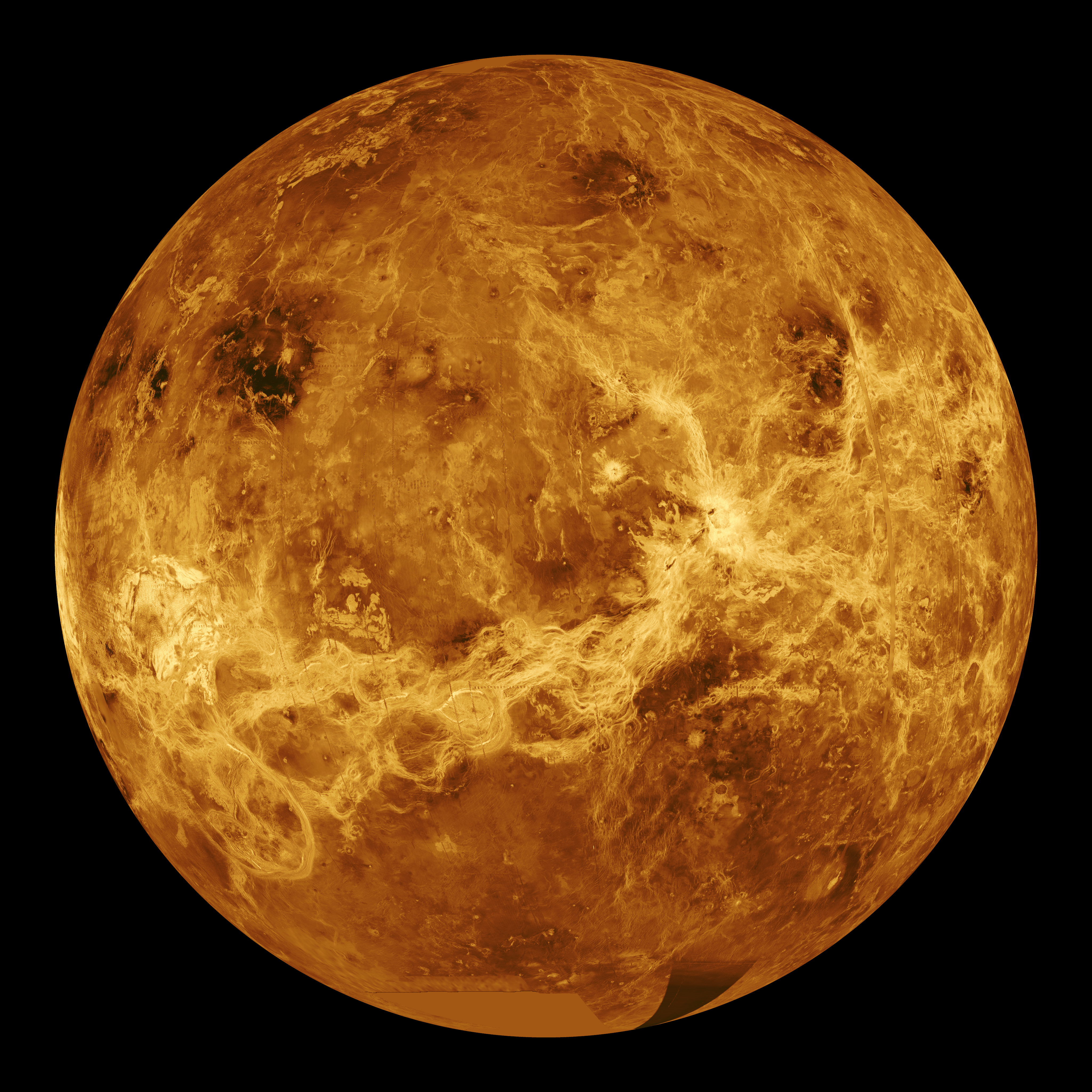Venus is the most hellish place I know of in the Solar System, and maybe even the broader Universe. Even though Venus looks pretty harmless and is named for the Roman goddess of Love, beneath the soft looking clouds lies sulphuric acid rainfall, 450 degree surface temperatures, and crushing pressure 90 times the atmospheric pressure of Earth at sea level.


How do we get the surface picture of Venus above? NASA’s Magellan probe in 1994 finished mapping the surface by looking at Radio wavelengths emitted by the planet and using radar to bounce waves off the surface to measure features.
Though Magellan came up with some interesting results. It found that higher elevation areas of the surface such as highlands reflected radar very well, but at the highest elevations the radar results eventually turned black, meaning there was no radio wave reflection. Why?
Through the last twenty years since the Magellan maps have been made, no one has been able to figure out why this is happening. Currently scientists have two schools of thought on the subject. It’s either ‘frost’ made from heavy metals, or ferroelectric crystals.
Just like on Earth, the highlands of Venus are cooler than the lowlands. This temperature difference could lead to a build-up of frost on Venus’ highlands, that would not be seen at lower elevations. It would also be radio bright as it would be very reflective, in the same way that frost on Earth reflects visible light into space. Of course Venus is far too hot to have frost made of water, rather the Venusian frost would be made of metallic compounds such as coloradoite (which consists of mercury and tellurium) and tellurobismuthite (which is made of bismuth and tellurium). These would be radio bright regardless of elevation.
The other possibility is that crystals on Venus have separated positive and negative electric charges, effectively making one side of the crystal positive and the other negative. These ferroelectric crystals, as they’re called, have properties that depend on temperature. Research suggests that these crystals would be radio bright until they reached a certain temperature, and then they would stop reflecting radio waves at the highest elevations.
Whatever it is that’s causing the strange radio behaviour on Venus, one thing is certain. It is very hard to test the properties of elements on a planet with such a high pressure and hot environment. There may be a yet-unknown crystal on Venus that is creating these strange conditions.
We will have to send a probe again someday, though Venus has a history of eradicating any probe we send in approximately an hour. So until we find a way to produce a much tougher probe, or we find a way to justify millions of dollars for an hour long science gathering mission, Venus will remain a mystery.

prof prem raj pushpakaran writes — John Brown Francis Herreshoff, the great metallurgical chemist who invented process for making Sulphuric Acid was born on February 7th, 1850!!!